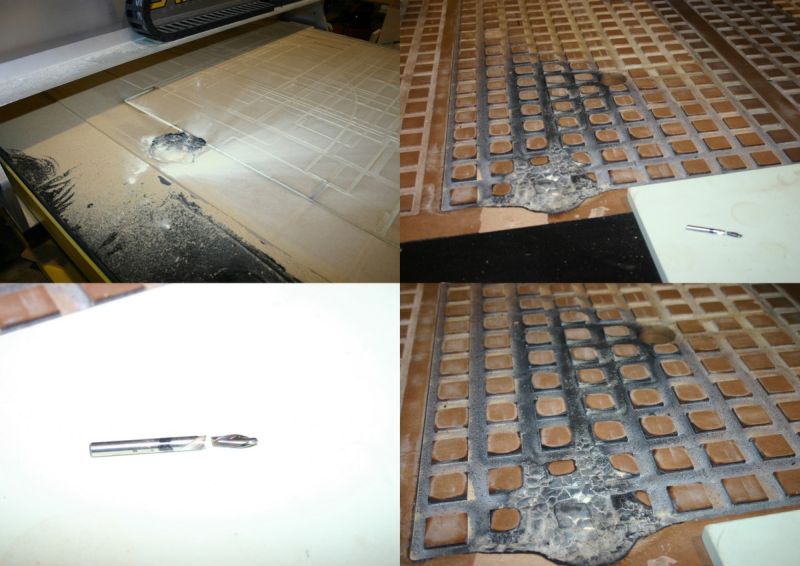Question
I have a small cabinet shop and am looking for a whole shop dust collector. I have narrowed it down to 3 collectors - Woodmaster 5hp, Penn State 3.5 hp and Grizzly 3.5 hp. Which one would be better? Woodmaster claims theirs will produce 4900 cfm. Penn State tells me this is impossible from a 5hp unit. Can anyone shed light on this?
The way I am planning on setting this up is to hook the blower up and shoot all of the dust and shavings outside into an open bin. I don't want to empty bags.
Forum Responses
(Dust Collection Forum)
From contributor J:
Many less-scrupulous manufacturers measure CFMs with no ductwork connected to them, so the ratings don't reflect anything like actual shop conditions. The resistance created by having to pull air (and chips) through ductwork is called static pressure and the unit of measure is inches of water column. To make meaningful comparisons you really need to know the particular static pressure at which the CFMs are measured. For example, I'm looking at specs on a particular 2HP collector which moves over 1400 CFMs at 2" static pressure, but only 1000 CFM at 6.5" SP.
Unfortunately, data about CFMs at particular SP levels isn't always available on cheaper units, so you can't make accurate and meaningful comparisons. You're stuck looking at amperage, horsepower, reading reviews of particular units, crossing your fingers and hoping for the best.
My Torit is a 7-1/2 HP 3 ph Baldor motor and stands about 13' high. It's really too big for my one man shop but I got a very good deal on it. This collector is rated in the 3500 cfm area depending on many factors. No Taiwanese knock off with a smaller motor is going to outperform it - that much I'm sure of.
The things you need to know are, how much ductwork you will be running (how far away your farthest machine is), how many machines will be used at once, what the cfm requirements of those machines is. Anyone who advises you what to buy without knowing this basic information is just trying to take your money. In my setup I can easily run 3-6" gates open at once. Unless you need more than that, you wouldn't really need 4500 cfm anyway.
My advice (as usual) is to keep your eyes open for auctions and craigslist, as industrial collectors go for pennies on the dollar. I always prefer to buy the better machine used than the cheaper version new, but that's just me.
Thanks for the info on the Penn State. I talked with Woodmaster again yesterday and was told that they had the 5 hp dust collector connected to a machine about 10 ft away and cut a slit in the hose close to the machine, stuck a probe in, and read 4944 cfm. Does this sound like a real world test?
But that's irrelevant anyway - if it works for you, go for it.
As far as back pressure, the way I've seen it handled is to have a blast gate on the outflow of the cyclone. With the DC running and an amperage gauge, you close the gate until you get the airflow and amps right. Then you can shoot it all outside. Don't know if it would be the same for just a blower configuration or not?
A probe can't read CFM; it can only read velocity. Their probe probably read 4944 feet per minute, which is an entirely believable air velocity with a 5-horse blower connected to a single machine, but it doesn't tell you what the volume is (you'd need to know the pipe diameter to figure that out) and it doesn't tell you how it would perform if blast gates to multiple machines were open at the same time.
1.) Draw a floor plan of shop to scale. Include location of dust producing machines and indicate size and location of hood outlets.
2.) Determine duct velocity required for branches and main. Typical wood dust, 4,000 FPM branch velocity and 3,500 FPM main velocity.
3.) Determine CFM of each branch.
4" = 350 cfm 5" = 550 cfm 6" = 785 cfm
7" = 1,100 cfm 8" = 1,400 cfm
4.) Determine diameter of main duct.
5.) Figure system resistance.
Feel free to utilize my design guide, which will help you through the 5 steps. Once the exercise is completed, we will have determined total CFM required and system resistance. Now it's time to look for the blower or dust collector. You can purchase a material handling blower only from a company like Grainger. They have charts for the blowers that show CFM deliveries at various levels of static pressure. As indicated above, if all a manufacturer can tell us about their machine is how much air it will move at no resistance and that at max resistance it won't move enough air to blow out a candle, we are in the dark. I guess some manufacturers don't want to pay the Air Movement and Control Association to test their units. Spending the time on complete preliminary design will certainly pay off. The easy part is purchasing the blower only or dust collector.
